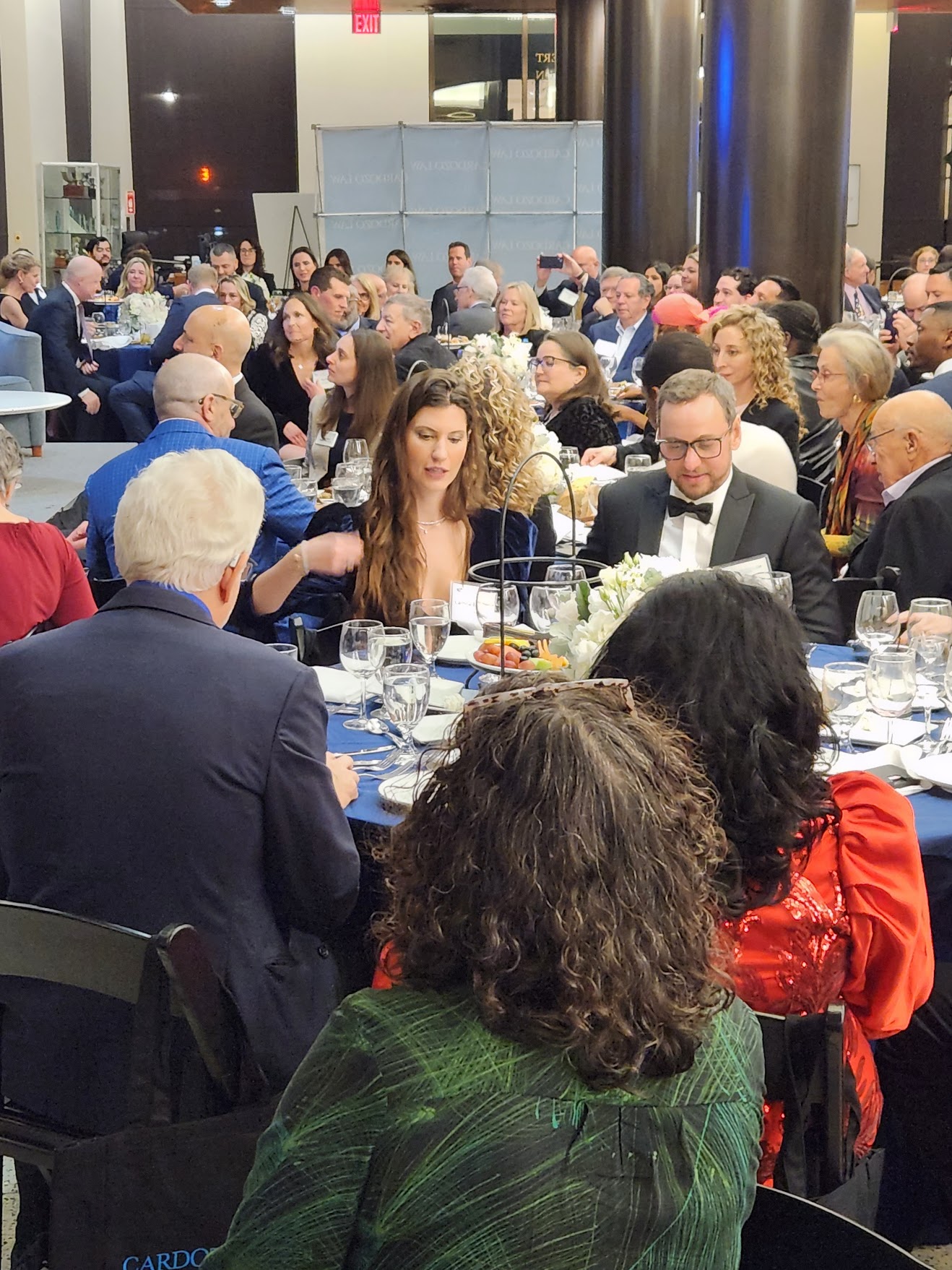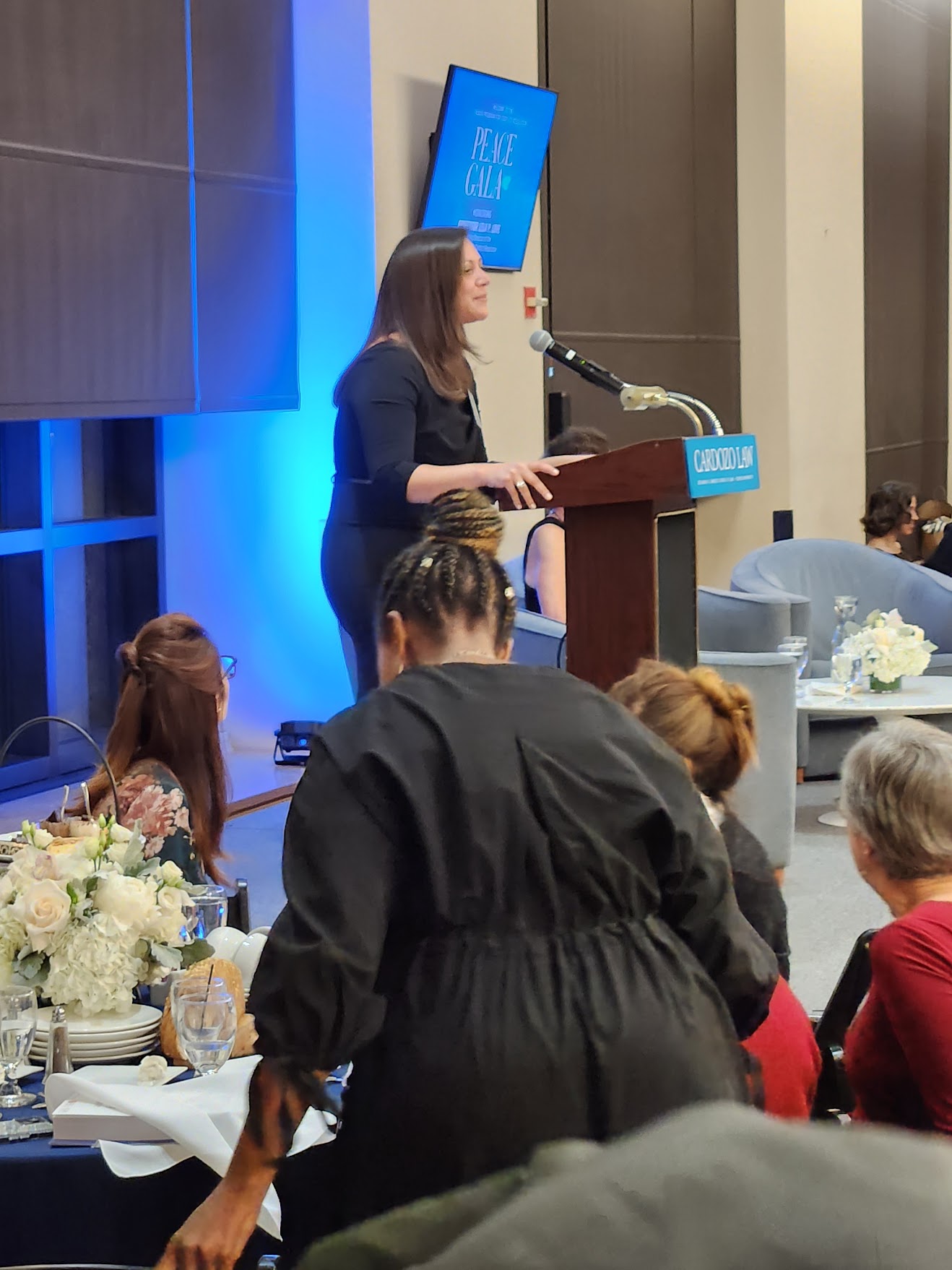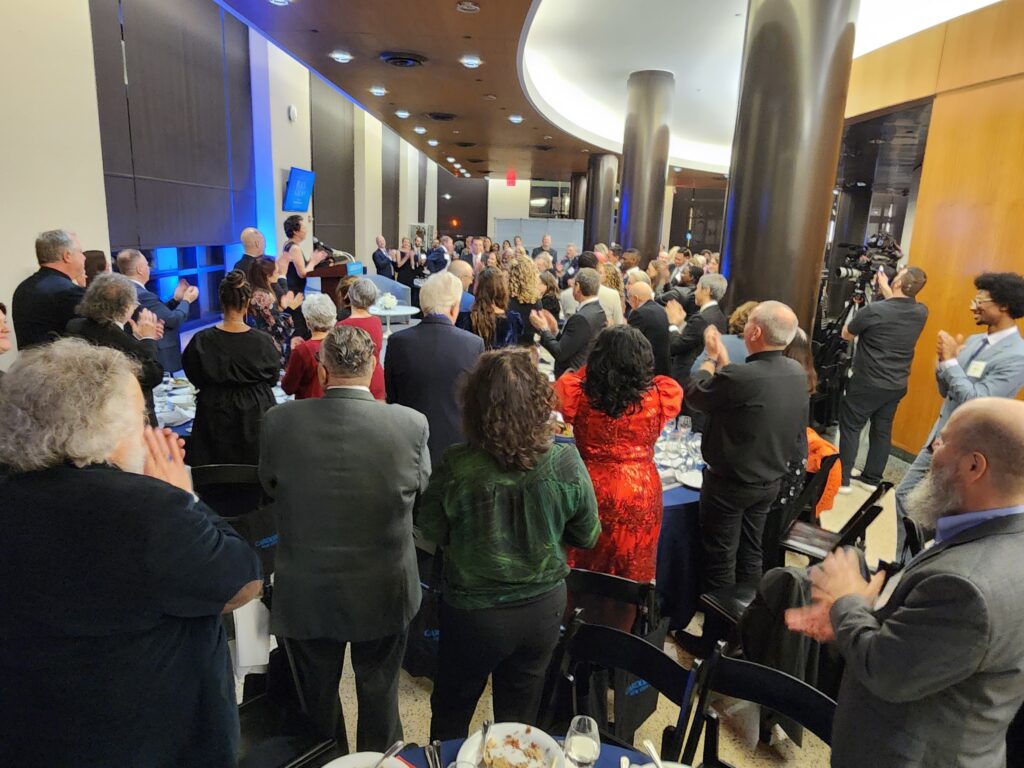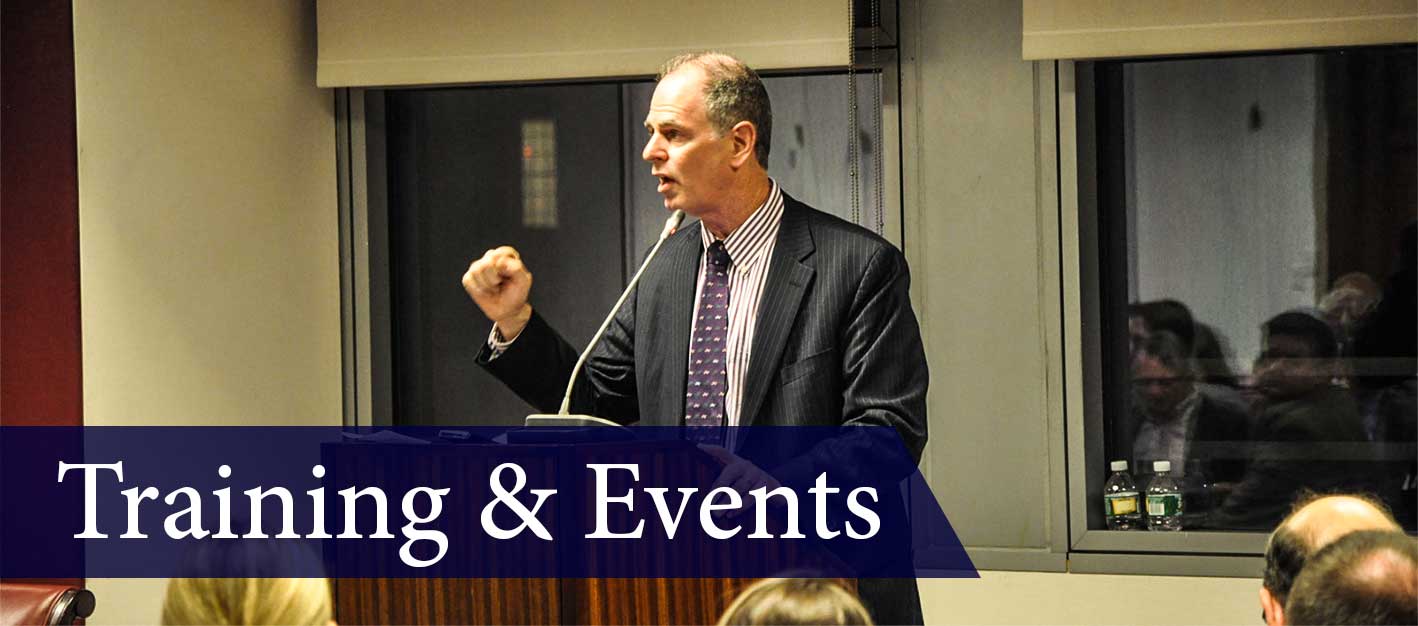
Event Information:
-
Thu07Nov20246:00 pmBenjamin N. Cardozo School of Law
Peace Gala Honoring Lela Love
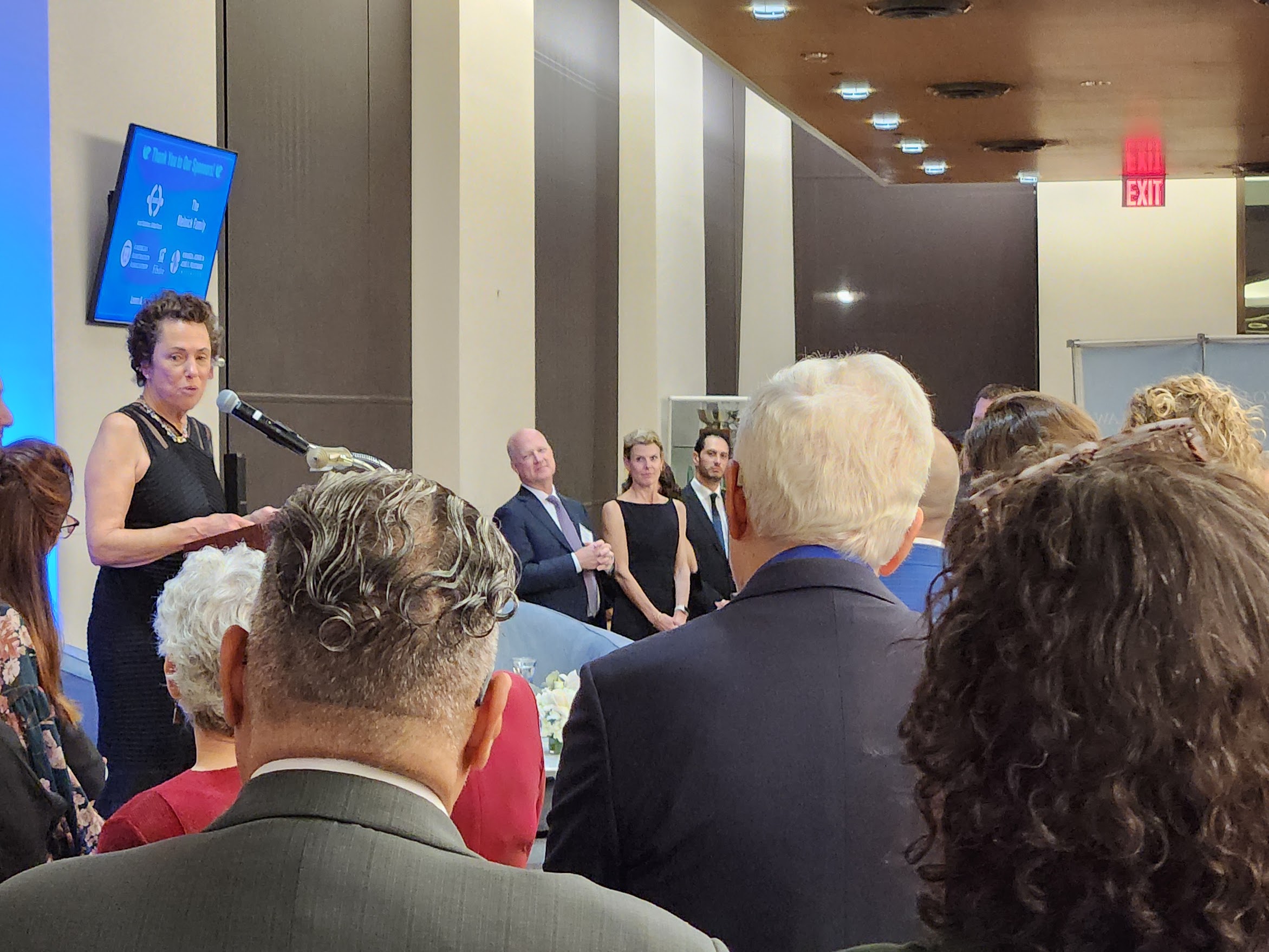
I was delighted to participate in last night’s Peace Gala honoring Lela Porter Love for her remarkable achievement in The Cardozo School of Law's award-winning Dispute Resolution program, and 40 years of leadership in the Dispute Resolution field – teaching, writing, training, Bar leadership and active mediation.
The event was sold out and brought together a host of luminaries in the Dispute Resolution field. It was a testament to Lela’s successor, Professor Andrea K Schneider, and Robyn Weinstein, not to mention the entire Host Committee
It was wonderful seeing so many folks: @Roger Deitz, Vivien Shelanski, Todd Drucker (now with Miles), a ton of JAMS and AAA people, including the ever-present Jeffrey T. Zaino, NYSBA folks, including past Dispute Resolution Section Chairs Edna Sussman, Charlie Moxley, and Noah Hanft; Cardozo grad who have grown prominent in the Dispute Resolution field, including Dan Weitz, Robyn Weinstein, Brian Farkas, Joshua Schwartz, Brad Roth, Glen Parker – there with Elizabeth Clemants – , and many others.
Dean Melanie Leslie presented beautiful encomia on Lela, describing her as a Force, in five different dictionary definitions, and we all enjoyed the conversation among ADR Visionaries Lela Love, Hon. Daniel Weinstein, and Professor Homer C. La Rue.
The event ended with a rousing chorus of “Imagine.”
In addition to the Program brochure, with Glen Parker and Robyn Weinstein as Editors, the AAA/ICDR published a 463-page book for the event: Peace, Stories and Writings of Lela Love. My contribution to the section on stories mediators tell about Lela, together with a few images from the event, can be found below.
Ode to Lela Love
(Simeon H. Baum, mediators.com)
I cannot remember the first time I met Lela Love. It was likely in the mid 1990s, perhaps at a meeting of the ABA’s Litigation Section’s ADR Committee at some lovely venue, like New Orleans. Whenever it was, Lela was already an established leader in the Dispute Resolution field. She had already brought Cardozo’s ADR program into the lead as one of the top ADR programs in the United States, or the world, for that matter.
When Len Riskin published his famous Grid for the Perplexed, a taxonomy of the field of mediators, finding some to be evaluative or directive with others facilitative, Lela was quick to respond, prompting a debate or discussion that galvanized the ADR field and sharpened the framework for understanding mediation over the next two decades. She and Kim Kovach published a piece calling the notion of “evaluative mediation” an oxymoron. It led us into thinking in terms of labeling, or what Confucius would call a rectification of names.
One of my first memories of Lela is bringing her into a panel of mediation experts to speak at the New York County Lawyer’s Association on Impasse Breaking Techniques. Lela, who, with Josh Stulberg, taught a mediation class at Cardozo, with the BADGER structure, used as her technique: changing the Agenda. If the parties were stuck on one issue, then pin it – put it off to the side – and move to a different issue.
During that training, another mediator, Kathy Roberts, when she was still a US Magistrate Judge, before joining JAMS, offered as her technique the mediator’s proposal. When the parties were snagged and all else had failed, the mediator could propose a deal or a solution which did not represent the right solution, fairness, or a reflection of the court outcome. Rather, it was the mediator’s best sense of what deal would be doable, what would get it done. I still remember the lively discussion that ensued. Lela raised a number of concerns. Would this be fair to the party that was forthcoming, sharing interests, case weaknesses, and ultimate deal possibilities with the mediator where the other party had been strategically withholding? Would this be a move from party empowerment to making the mediator the star of the show? Would it shift the process from one of collaboration, development of interests, creating options, and building understanding to a process that spins the mediator to generate the best mediator’s proposal? It was quite a night.
During our preparation for this or another program, I remember giving Lela a hard time during a role play exercise. Around that time, Abe Tawil, a Cardozo law student who already had his MD, had served as Grenada’s chief medical officer, was a financial advisor, and was serving as a mediator for the US Postal Service’s transformative style REDRESS program, called me to speak at Cardozo’s ADR club. Those two touches seem to have prompted Lela to invite me to teach at Cardozo, initially during a summer course on Fundamentals of ADR, including Negotiation, Mediation, Neutral Evaluation and Arbitration. I owe Lela for having faith in me and leading me into the rewarding path of law school ADR teaching.
Several years later, Lela invited me to teach Negotiation. When I said to Lela that I am really a mediator, she observed that Negotiation and mediation go hand in glove. We must be able to grease the wheels of negotiation when facilitating the parties’ own negotiation. She had such a clear understanding of this field. I owe Lela for having the opportunity to spend the last 25 years teaching this course at Cardozo.
One of the most memorable experiences with Lela, also from the late 1990s or early 2000s, was participating in a “Train the Trainers” weekend retreat that she led. She taught us the value of flip charts, magic markers, ice breakers, role plays, exercises, and goofy songs. I cannot number the times over the years that Lela would appropriate a Beatles song for ADR purposes, prompting some truly embarrassing performances. In this and other meta trainings, Lela led us to think about how we can inspire and activate true learning, exploration, and skills development when training people to be mediators. She modeled what she taught.
Beyond these professional memories, some of my most cherished are the breakfasts with Lela at Barney Greengrass, that Upper West Side institution with world class Nova and eggs, and bialys. Lela would encourage me to talk about Martin Buber, phenomenology, Zen, or contemplative traditions. Put more fairly, she would not stop me from talking about my favorite topics. By the end of breakfast, I would feel so deeply appreciated, I was amazed by my own insight. Of course, it was Lela who was generating all of this. She has a quality that David Brooks highlights in his recent book How to Know a Person, The Art of Seeing Others Deeply and Being Deeply Seen. Brooks strikes a pair of opposites – Illuminators and Diminishers. Illuminators make the other shine. Diminishers dwarf by highlighting their own excellence. Lela is the consummate “Illuminator.” She brings out the best in every person whom she encounters. It is what she has been teaching for decades.
Lela never mentions her impressive academic pedigree or massive accomplishments. She is plain spoken with an accent that I cannot peg. Some mix of New England and the Carolinas, that produces the most frank and open tone. She shuns sesquipedalians. Lela’s plain manner, simple talk, and openness seem to embody the Shaker song, Simple Gifts.
'Tis the gift to be simple, 'tis the gift to be free,
'Tis the gift to come down where we ought to be,
And when we find ourselves in the place just right,
'Twill be in the valley of love and delight.
When true simplicity is gain'd,
To bow and to bend we will not be asham'd,
To turn, turn will be our delight,
Till by turning, turning we come round right.Lela, you have been far more than a simple gift to me. You have been far more than a simple gift to all of us. You have elevated the field and us all. We cannot be more grateful.
